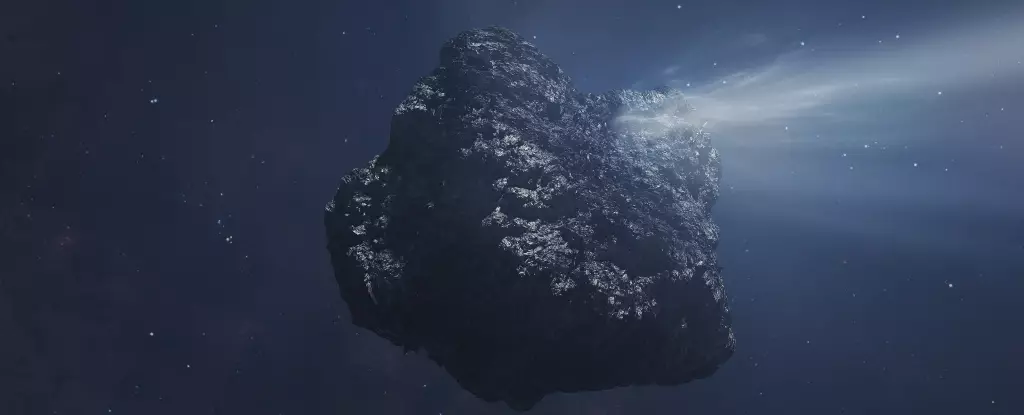The cosmos continues to astound us with its remarkable phenomena, and one such astounding discovery is Comet C/2014 UN271, or Bernardinelli-Bernstein. This comet has been catching the attention of astronomers worldwide due to its sheer size and unexpected behavior. With a diameter of approximately 137 kilometers (85 miles), this celestial giant is substantially larger than prior record-holders, dwarfing the infamous asteroid believed to have contributed to the dinosaurs’ extinction. The unsettling reality we confront is that this colossal mass is on a trajectory that brings it into the inner Solar System, causing both excitement and apprehension within the scientific community.
The Impact of Size: A Colossal Discovery
The sheer scale of UN271 beckons deeper inquiry. To put its enormity into perspective, it is nearly 14 times larger than the asteroid that collided with Earth eons ago. The size of this comet not only evokes wonder but also raises significant questions regarding the processes at play within the Oort Cloud, the vast reservoir of icy bodies located on the outskirts of our Solar System. Its exceptional size positions it as a unique subject for astronomers keen to analyze the characteristics of such massive comets, which are often considered relics of the early solar system.
Astrochemist Nathan Roth, from American University and NASA’s Goddard Space Flight Center, emphasizes the vitality of studying UN271’s characteristics. The outgassing of carbon monoxide detected during observations reveals that we are just beginning to scratch the surface of understanding how such a significant icy entity operates. The volatile nature of comets, especially one of this magnitude, suggests that we may learn more about the evolution of comets and their interaction with solar forces as UN271 continues on its impressive journey toward the Sun.
Outbursts and Mysteries: A Dance of Jets
UN271 has not only proven to be massive but also mysteriously dynamic. Observations conducted using the Atacama Large Millimeter/submillimeter Array (ALMA) in Chile have unveiled what Roth and his colleagues describe as “explosive outgassing patterns.” These findings illuminate the character and evolution of the comet in real-time, a captivating glimpse into a celestial object’s behavior as it approaches the Sun.
On two separate occasions in March 2024, astronomers used advanced spectroscopy techniques to observe UN271 as it spat jets of gas and dust into space—essentially, a comet’s version of a sneeze. The first observation on March 8 revealed double jets projecting from the comet’s icy core, with subsequent views showing a decrease in activity. This phenomenon raises essential considerations regarding how quickly these comets can shift and adapt to solar influences. Furthermore, the appearance and disappearance of the jets could signify cycles of volatility more typical of smaller comets, challenging our existing expectations about much larger bodies like UN271.
Beyond the Familiar: The Comet’s Unique Place in Our Solar System
Despite its impressive dimensions, UN271 is not the largest known comet. That title belongs to 95P/Chiron. However, Chiron resides in a stable orbit between Saturn and Uranus, while UN271 is on a comparatively spirited course, aiming for a close approach that brings it within the orbit of Saturn in January 2031. This difference highlights the variety of celestial paths comets can take, feeding into ongoing discussions regarding their trajectories and how they interact with the solar system’s other entities.
As UN271 draws nearer to the Sun, it promises to deliver valuable data for scientists excited to observe the evolution of its characteristics. However, as fascinating as the prospect of viewing such a gargantuan entity may be, observers will only be able to catch glimpses of it through telescopes. Those hoping for a direct view of UN271 will be disappointed; the comet’s trajectory ensures it will remain outside the limits of naked-eye visibility on Earth. This future unveiling lays groundwork for expansive studies that could reshape our understanding of cometary behavior and their role in the evolution of our solar system.
Through continued observations and research, the story of Comet C/2014 UN271 is just beginning, and the astronomical community looks forward to exploring the fundamental questions it raises about the mysteries of our solar system.

